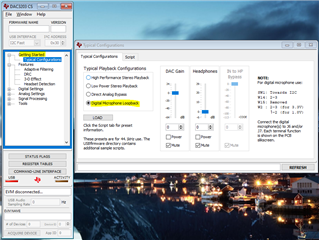Other Parts Discussed in Thread: OPA344
Dear TI-san,
I'm considering a circuit that uses a digital microphone for microphone input of a CTIA headset.
1
Are you selling new products since TLV320DAC3203?
2
TLV320DAC3203 has a stereo output.
Is there a product that adapts to monaural output?
Thanks,
S.Suzuki







